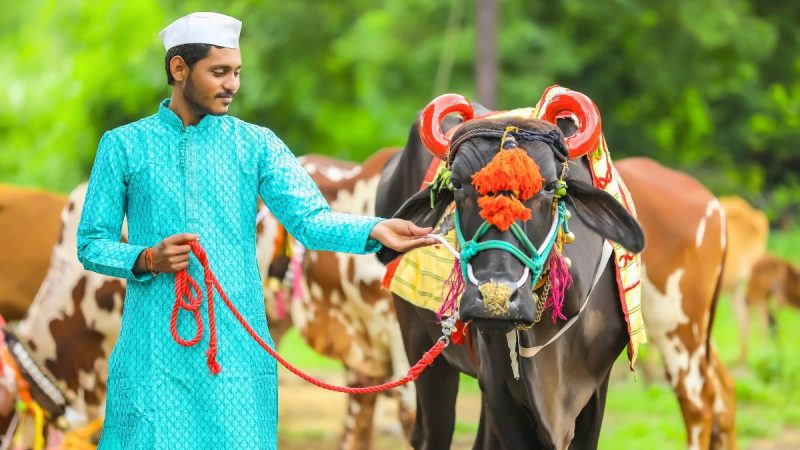Agriculture is a significant part of India and also its culture and festivals. Whether it’s the harvest season or the time to sow new crops, you will see different parts of the country celebrate the agricultural year in the form of different festivals. One such festival is celebrated in Maharashtra and it is called Bail Pola. This festival is celebrated to honour cattle and their contribution to agriculture and also to mark the new agricultural year. Read on to learn more about this festival, its significance, and its rituals.
Significance Of Bail Pola For Farmers In Maharashtra
Bail Pola or Pola is a significant festival in Maharashtra, especially for the farmers. The day is dedicated to the cattle and their contribution to agricultural work and also marks the end of the monsoon season. This day is considered to be the beginning of a new agricultural year and is celebrated in full gusto among the people in the state.
On Bail Pola, people mainly worship bulls as they contribute greatly to agricultural and farming activities. According to Wikipedia, the farmers don’t work the bulls in the farmland on this day. In North and West India, farmers celebrate a similar festival called Godhan. In Southern India, farmers celebrate Mattu Pongal, while in Telangana, Eruvaka Purnima is celebrated on full moon day with similar rituals.
Also Read: Indian Railways To Run 342 Special Trains For 10-Day Ganesh Festival; Schedule, Routes & More Inside
Date, Ritual & All You Need To Know About This Festival
Bail Pola is celebrated on Amavasya Tithi in the month of Bhadrapada. This year, it is being celebrated on September 2 and farmers across the state will be praying for a prosperous and successful agricultural year ahead. As per Wikipedia, farmers wash their bulls, massage them with oils, and then deck them up with colourful shawls, flowers, and bells. They even paint the horns with turmeric and kumkum and hold a procession with music, dances, and colours!
The bulls in the procession are also offered lots of foods like grains, lentils, raw vegetables and jaggery. This is followed by special pujas to seek good health for the cattle in the region. People light up diyas, cook special food, and decorate their homes as part of the celebrations as well. In rural Maharashtra, schools are shut on this day as well.
Did you know about this native Maharashtrian festival? Let us know in the comments!
Cover Image Courtesy: Canva

